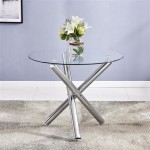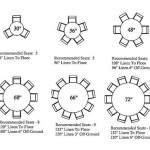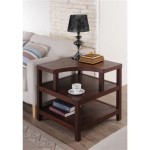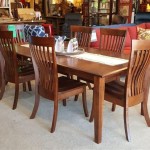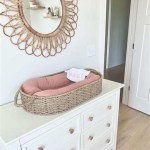Average Height for End Tables: A Comprehensive Guide
End tables are essential furniture pieces in living rooms, bedrooms, and other spaces. They provide a convenient surface for lamps, books, drinks, and other items, enhancing both functionality and aesthetics of a room. Selecting the right end table involves considering several factors, with height being a particularly important one. The average height of an end table is crucial for ensuring comfort, accessibility, and visual harmony within a room.
This article explores the factors that influence the average height for end tables, providing guidance on how to choose the most suitable height for various spaces and seating arrangements. The intent is to equip readers with the knowledge necessary to make informed decisions when purchasing or designing end tables.
Understanding the Role of Seating Height
The primary function of an end table is to provide a readily accessible surface next to a seating element. The ideal height of the end table is therefore directly related to the height of the adjacent sofa, armchair, or bed. An end table that is too low requires users to reach downwards awkwardly, while one that is too high can feel imposing and obstruct the natural flow of movement.
Generally, the surface of an end table should be at the same height as, or slightly higher than, the arm of the adjacent seating. This allows for easy placement and retrieval of items without strain or discomfort. A difference of a few inches, either higher or lower, can still be acceptable, depending on personal preference and the specific use case.
To determine the appropriate end table height, it is crucial to measure the height of the seating’s armrest. This measurement serves as a baseline for selecting an end table that provides optimal accessibility and comfort. Failure to consider seating height may result in the selection of an end table that is aesthetically pleasing but ultimately impractical.
Standard End Table Height Ranges
While there is no universally fixed "average" height for end tables, standard ranges exist to accommodate the variety of seating options available. The most common height range for end tables is between 22 inches and 30 inches. This range is designed to complement the typical height of sofa and armchair arms, which usually fall within a similar spectrum.
End tables with heights between 22 and 24 inches are generally best suited for lower seating options, such as modern sofas or platform beds. These tables provide a surface that is easily accessible without requiring excessive reaching. Conversely, end tables with heights between 28 and 30 inches are often preferred for taller seating, such as traditional armchairs or beds with thick mattresses.
It is important to note that these are just general guidelines, and the ideal height for an end table may vary depending on the specific dimensions of the seating and the personal preferences of the user. Taking accurate measurements and considering the intended use of the end table are essential steps in the selection process.
Beyond the standard range, specialized end tables are available in non-conventional heights. These end tables may be lower than 22 inches, designed to complement floor seating, or taller than 30 inches, which is ideal as a side table for a bar or as a nightstand for a tall bed frame. Tailoring end table height to seat height is key for optimal comfort.
Factors Beyond Seating Height
While seating height is the primary determinant of end table height, other factors also play a role in the final decision. These factors include the intended use of the table, the overall style of the room, and the personal preferences of the homeowner.
If the end table is primarily intended for holding lamps, a slightly taller table may be desirable. A taller table positions the lampshade at a more optimal height for illuminating the surrounding area. Similarly, if the end table will be used for placing drinks or snacks, a height that allows for easy reach while seated is crucial.
The style of the room can also influence the choice of end table height. In a more formal setting, taller end tables may be preferred to create a sense of elegance and sophistication. In a more casual setting, lower end tables may be more appropriate, creating a relaxed and inviting atmosphere. The overall aesthetic of the table should complement the room and flow with all pieces of furniture.
Finally, personal preferences play a significant role. Some people prefer end tables that are perfectly aligned with the arm of their seating, while others prefer a slight difference in height. Ultimately, the best end table height is the one that feels most comfortable and convenient for the user.
When calculating the ideal height of your end table, consider the proportions of the room. Extremely tall end tables in a small room, or short end tables in a large room, can look out of place. Choose a table height that is the right scale for space.
The design of the end table itself can influence the perception of its height. Tables with thick tops or bulky legs may appear taller than they actually are. Conversely, tables with thin tops or minimalist legs may appear shorter. Considering the overall design of the end table is important to ensuring that it fits seamlessly into the room.
Materials also add to the impact of a space. Dark end tables can make a table blend into a space, while glass or light toned tables can provide an element of open space based on their reflective or neutral surface.
The presence of drawers or shelves on the end table can also influence the optimal height. If the end table is intended for storing items, a taller table may be necessary to provide adequate storage space. However, it's important to ensure that the drawers or shelves are easily accessible without requiring excessive bending or reaching.
Beyond these considerations, it's also worth noting that the height of the end table can affect the flow of traffic within a room. An end table that is too tall or too wide can obstruct the path of movement, making the room feel cramped and cluttered. Choosing an end table that is the right size and height can help to create a more open and inviting space.
The positioning of end tables is equally important. When buying end tables, consider how many you will need around the space you want to design. Too many end tables can make a room feel cluttered, while not enough end tables may leave users without readily accessible surfaces. The ideal number of end tables depends on the size and layout of the room. It also is important to decide if matching end tables are needed. A more eclectic aesthetic will permit different styles of tables in the same room.
By considering these factors, including the style of your room, and any needed additional storage, the user will be able to calculate the best use of space in any room.
Before making a final purchase, it is advisable to test out different end table heights in person. This can be done by visiting furniture stores or by temporarily placing objects of varying heights next to the seating to simulate the effect of an end table. This hands-on approach allows for a more accurate assessment of comfort and accessibility.
Many online retailers offer virtual room planning tools that allow users to visualize how different furniture pieces will look in their space. These tools can be helpful for determining the optimal end table height and placement. Using these tools can help take out the guesswork when ordering online.
Ultimately, the selection of the right end table height is a balance of practicality, aesthetics, and personal preference. By carefully considering the factors outlined above, individuals can make informed decisions that enhance the functionality and style of their living spaces.

Convenience Concepts Mission End Table Gray

How Tall Should A Lamp Be On An End Table Perfect Tips Quick Guide Hirosart

Mission End Table Black

Bedside Table Dimensions

End Table Height How Tall Should Your Side Be Ca Living Room Sofa Tables

Seven Advantages Of Standard Size For A Coffee Table And How You Can Make Full Use It

Finding The Right Height For Your Side Table Belaré Home

Typical Coffee Table Height

How To Choose The Right Size Coffee Table Happy Haute Home

Oxford Chairside End Table With Shelf White

